Galikis Dhmokratias 13
Kavala City Grand Tour
- 2 hours
- Kids allowed
- Audio guide
- Tour guide
- Motobus
At a glance
Welcome to Kavala, a city filled with rich history, stunning landmarks, and cultural experiences that will leave you in awe!
Get ready to embark on an unforgettable city heritage tour, where you'll be guided through the city's historic landmarks and monuments with the help of our audio guide and app. The tour begins from “CitySpot by Xplora”, for a briefing, useful information, and a nice cup of coffee. We get on board our ecological Tuk Tuk to start from the seaside of the city and the coastal wall, which offers a picturesque backdrop for a leisurely stroll and some quiet reflection, surrounding the whole peninsula, beneath the imposing Imaret.
Then we enter in the old city of Panagia, where you'll be transported back in time as you stroll through the narrow streets and admire the charming architecture. As we pass by Imaret, a historic building that once served as a religious school and now a cultural center and a historical hotel, you will be amazed by its size.
We continue through the cobblestone streets to stop at Mohammed Ali’s square, where Mohammed Ali's house and statue are located there and both are the must-see attractions connected to the city's illustrious past. This tour gives you the opportunity to admire the breathtaking views from peninsula’s lighthouse (Kavala’s oldest lighthouse), a perfect spot for some incredible photos and a truly hidden gem!
Next is a stop at the Halil Bey Mosque, a beautifully preserved symbol of the city's rich cultural heritage. And no heritage tour would be complete without a visit to the majestic Castle - Acropolis, where you'll be treated to panoramic views of the city and the sparkling Aegean sea below. And of course, don't forget to capture some Instagram-worthy photos at the Kamares - Aqueduct, a striking Ottoman-era aqueduct that dates back to the 16th century, the city’s iconic landmark.
For a deeper understanding of Kavala's history, we visit the tobacco museum and municipal tobacco warehouse, where you'll learn about the city's important role in the tobacco industry. As you explore the fascinating exhibits you will gain insight into the significance of the tobacco in shaping the city's identity.
Then we visit to the Wix Mansion and Herzog Mansion - Town Hall, two impressive buildings which reflect the city's rich history and will leave you in awe of their grandeur. Right next the Great Club, a historic building with a fascinating past – similar to Vienna’s Musikverein. The Apostle Paul’s monument, which commemorates the city's connection to the apostle's historic journey is our last stop but not the end of your adventure.
Kavala is a treasure trove of cultural experiences, history tours, heritage sites, and monuments that will leave you spellbound.
Whether you're a history buff, a culture vulture, or simply a curious traveler, Kavala has something for everyone.
So, book your tour now, grab our smart guide app, charge your camera, and get ready for an unforgettable adventure in this captivating city!
In detail
-
CitySpot
-
Coastal wall
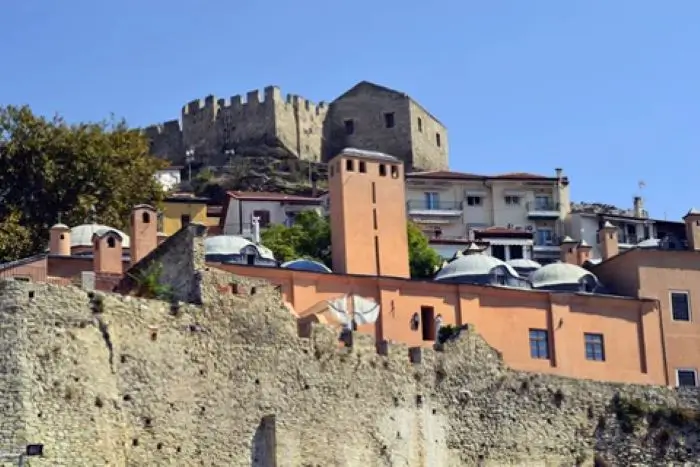
The early fortified walls of the Thasian colony were built at the beginning of the 7th century BC and were of a much smaller extent. Most of the existing coastal wall is a construction of the period 1520-1536.
-
Imaret

A huge building which was built in 1817 by Mehmet Ali Pasha founder of the last Egyptian dynasty at his hometown Kavala. It was a religious and educational center as well as a charitable institution of great importance that operated throughout the 19th century, until the beginning of the 20th century.
-
Mohammed Ali’s Square and Statue
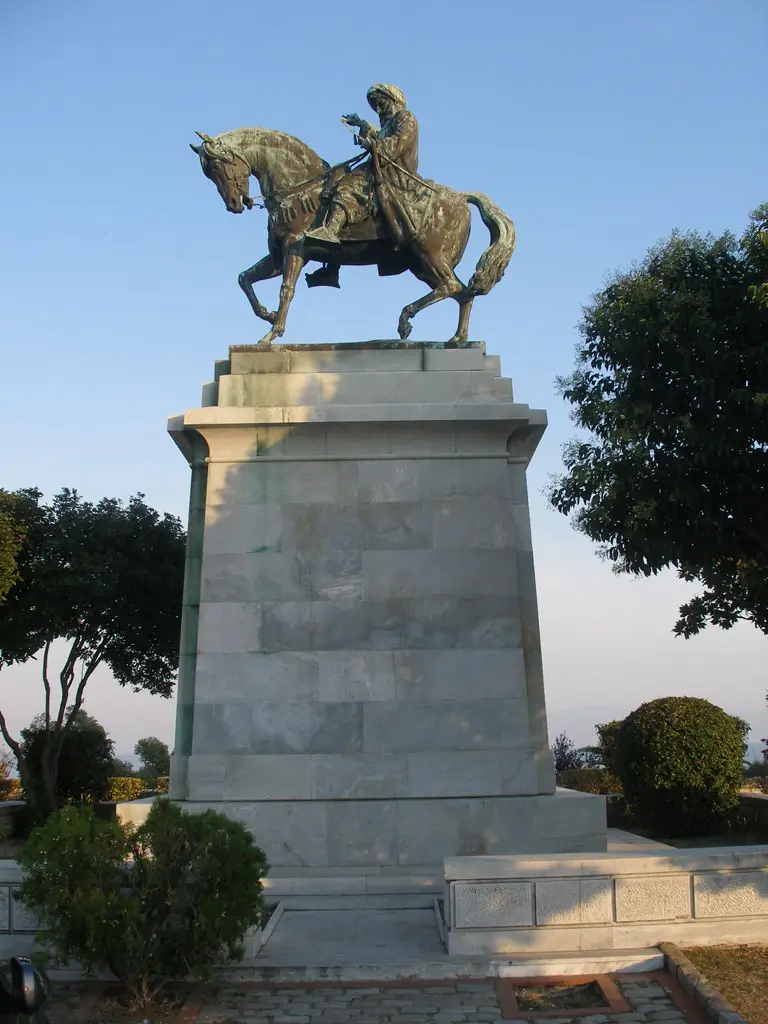
Mehmet Ali Square was formed in 1931 - 1934, in order to accommodate the statue which was donated by the Greeks of Egypt to the city of Kavala. It is the work of the famous sculptor Konstantinos Dimitriadis and was crafted in Paris. It depicts the commander and founder of the Egyptian dynasty, Mehmet Ali (born in Kavala in 1769 and died in Egypt in 1849), with his sword in its scabbard after returning, according to tradition, to his hometown to rest.
-
Mohammed Ali’s House
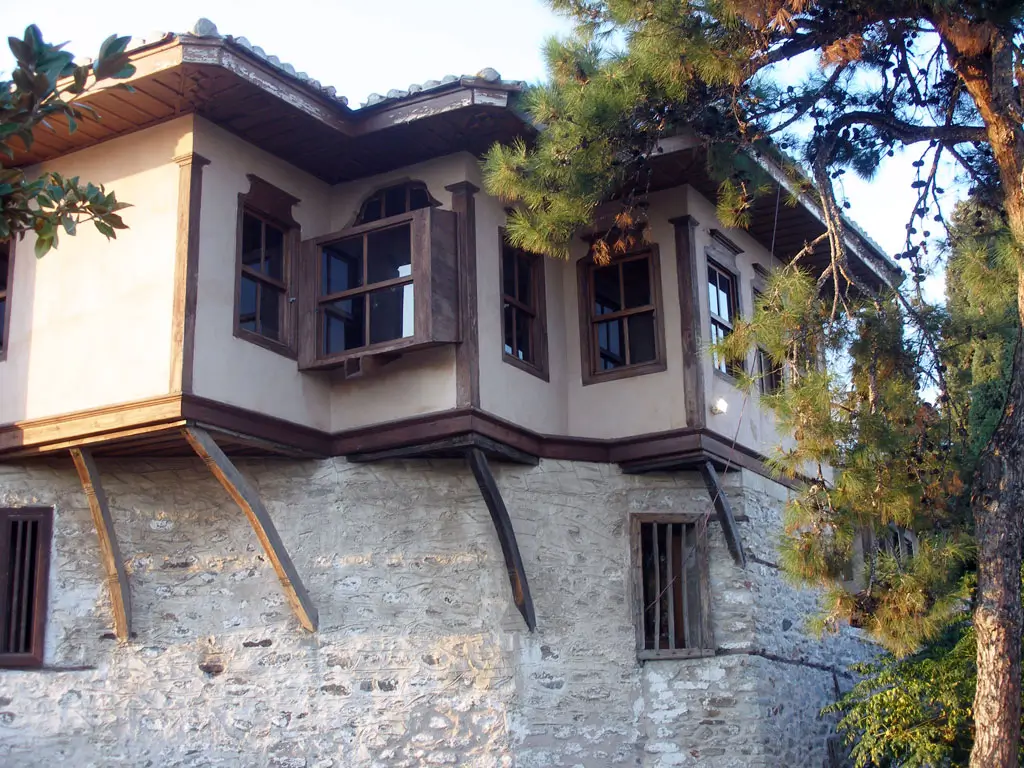
It was the largest house in the city at that time and is considered one of the most characteristic surviving examples of Ottoman architecture of the 18th century in Greece. In the so-called "konaki" the principle of separate arrangement of the men's and women's recreation areas known as "shelamlik" and "haremlik" respectively was applied.
-
Peninsula’s Lighthouse
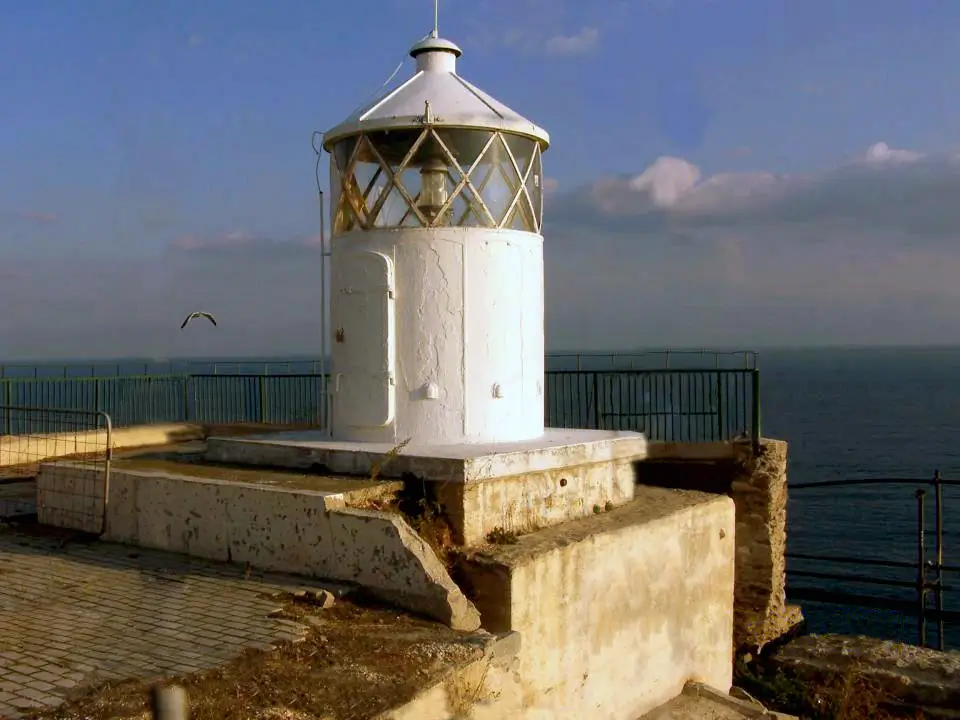
At the end of the peninsula there is a lighthouse, which was first built around the late 1880s to 1890s. Its current construction dates back to work done in 1929 and immediately after the Liberation in 1945.
-
Acropolis - Fortress
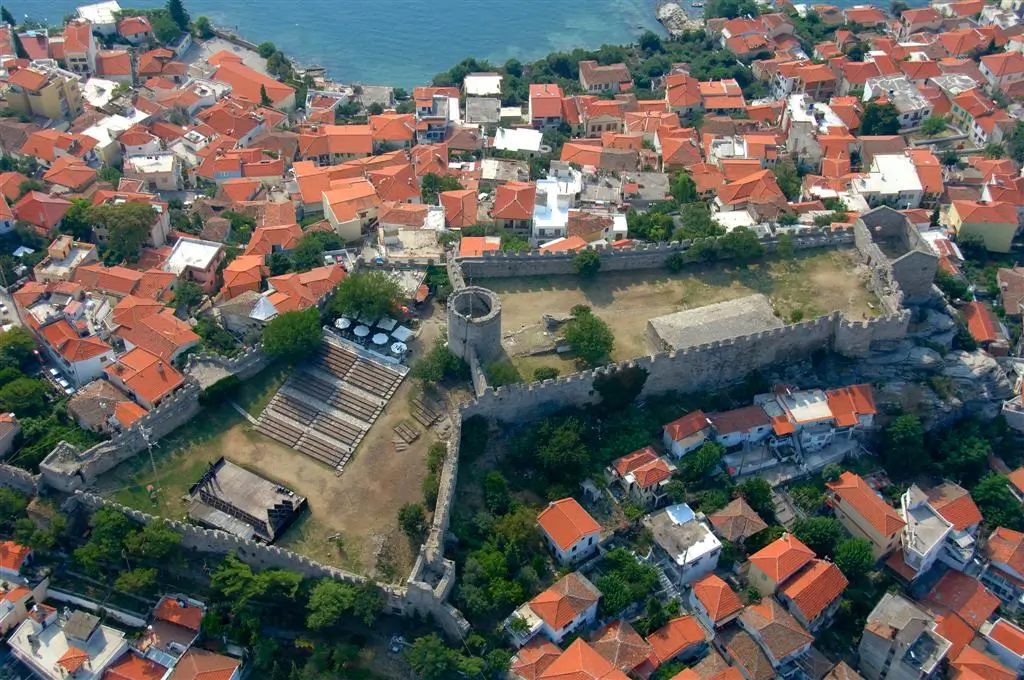
The Acropolis of Kavala is located at the top of the peninsula with its construction taking place in two phases in the mid-15th century on the ruins of the Byzantine acropolis of Christopolis, which was destroyed in 1391. The new acropolis broadly followed the form, layout and extent of the previous one.
-
Halil Bey Mosque – Palia Mousiki
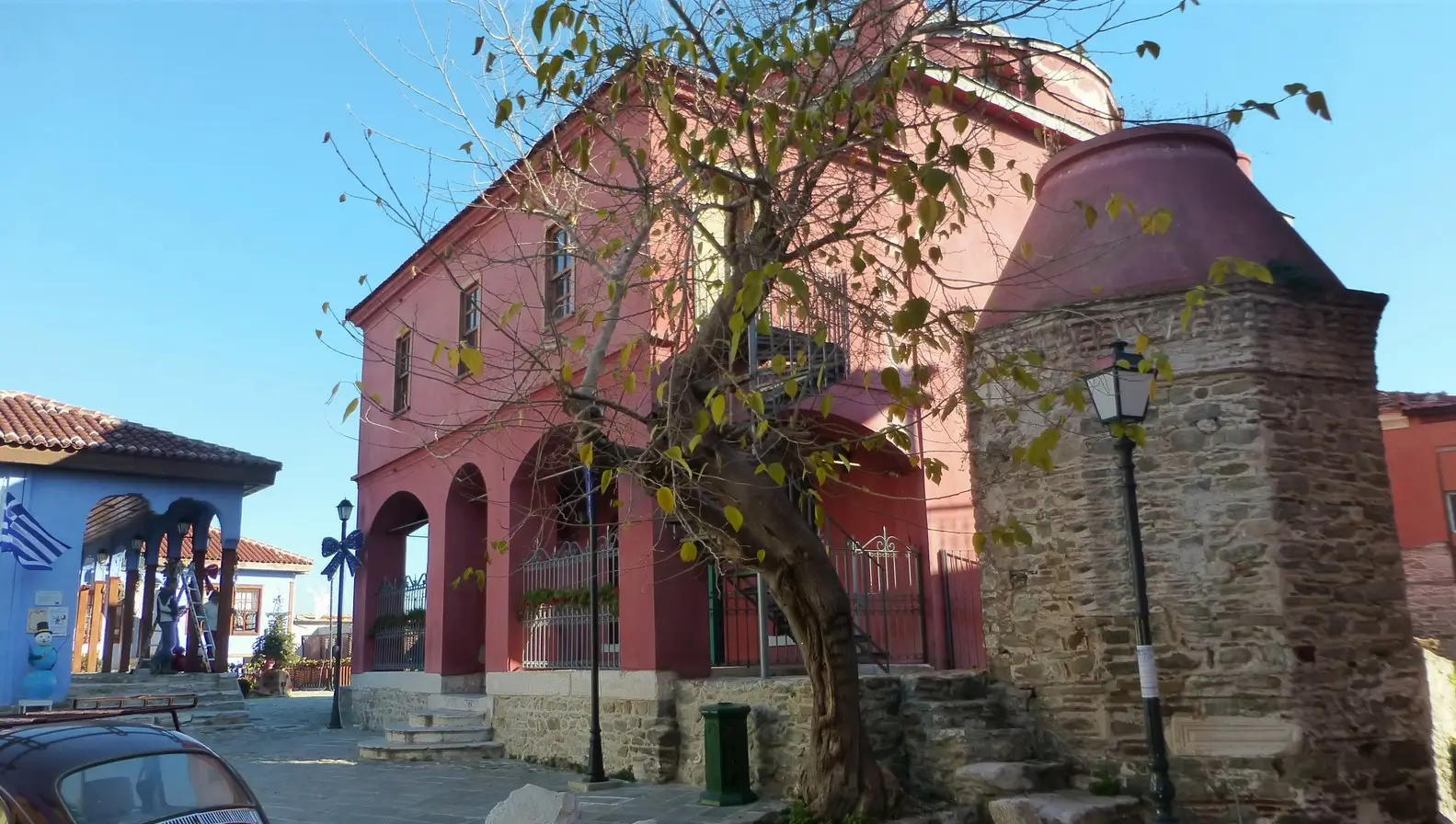
The Halil Bey mosque was part of a larger complex that included a madrasa (a seminary with eight rooms for students) and the Byzantine church of Agia Paraskevi (Saint Paraskevi) was located on the site of the mosque. It is possible that the church was converted into a mosque and the existing mosque was later built on the same site.
-
Aqueduct – Kamares

A colossal structure that dominates the urban landscape of the city is the aqueduct, or otherwise known as the Kamares. It is the most easily recognizable landmark of Kavala with a length of 270 meters and a maximum height of 25 meters, built of local granite and bricks. It was built by Ibrahim Pasha, vizier of Sultan Suleiman the Lawgiver, between 1520 and 1530, during the period of the reconstruction of the city and it was a work of vital importance.
-
Municipal Tobacco Warehouse and Tobacco Workers Square

The Municipal Tobacco Warehouse was built in 1910 and housed the company Kiazim Emin & Cie of the Turkish businessman and tobacco merchant Kiazim Emin. The building follows modern Ottoman architecture, known as Ottoman neoclassicism, with a strong influence of European neoclassical architecture. Today it is used as a multi-cultural venue, hosting permanent and temporary exhibitions, as well as various events.
-
Town Hall – Herzog mansion – Wix mansion
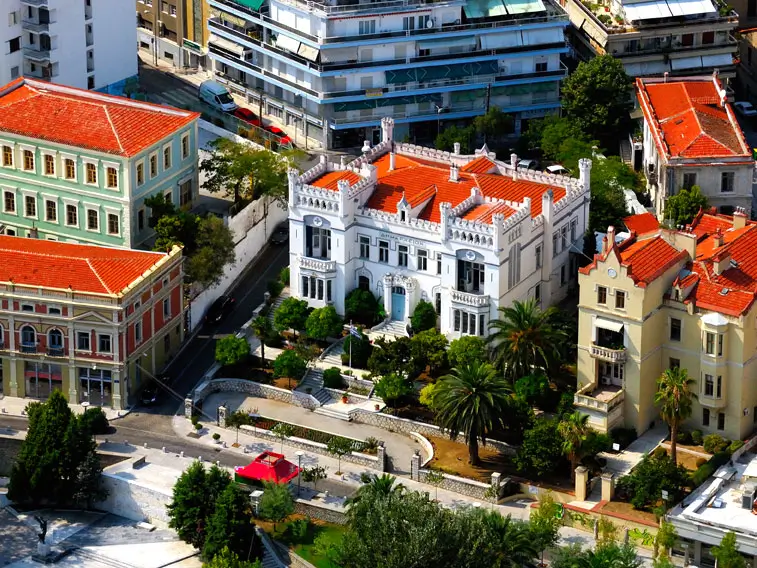
The building of the Kavala Town Hall is another important landmark for the city. Its architecture is strange and does not seem at all like the Ottoman or neoclassical structures found in the city, as it is a miniature of a Hungarian tower, due to its owner, the Hungarian tobacco merchant Baron Pierre Herzog, and was used as his residence. It was built in the late 1890s, and has strong romantic elements of old medieval towers and a distinct example of Gothic Revival with the Gothic arches on the towers and balconie
-
The Great Club

The Great Club was built in 1909 by the Philoptochos Society of Ladies of Kavala - a charity club for the poor, to house the Greek Community Club of Kavala and was inaugurated on 22 May 1910. The building is one of the finest examples of Austrian Baroque in Europe and unique in Greece and is a copy of part of the Vienna Musikverein. The neoclassical form of the building contains several elements of the ancient Greek tradition.
-
Municipal Tobacco Museum

From the mid-19th century until the 1950s Kavala was the largest tobacco processing and export centre in the Balkans. The cultivation of tobacco brings in the mid-19th century the establishment of domestic and foreign tobacco trading houses. People from the periphery begin to settle in the city which has begun to spread outside the walls of the peninsula.
-
Apostle Paul Monument

The very first European land that the Apostle Paul steps on in 49 AD is in the city of ancient Neapolis, as Kavala was then known, already an important port and commercial centre. In fact, Kavala was then, not coincidentally, called Christopolis for 600 years before taking its present name.
-
CitySpot
Galikis Dhmokratias 13
What is included
Tour on eco friendly tuk tuk
Multilingual Audio Guide App “SmartGuide”
Disposable headphones
Bottles of water
Important information
Cancellation
You can add
OnTheGo Sports Water Bottle, Earbuds


